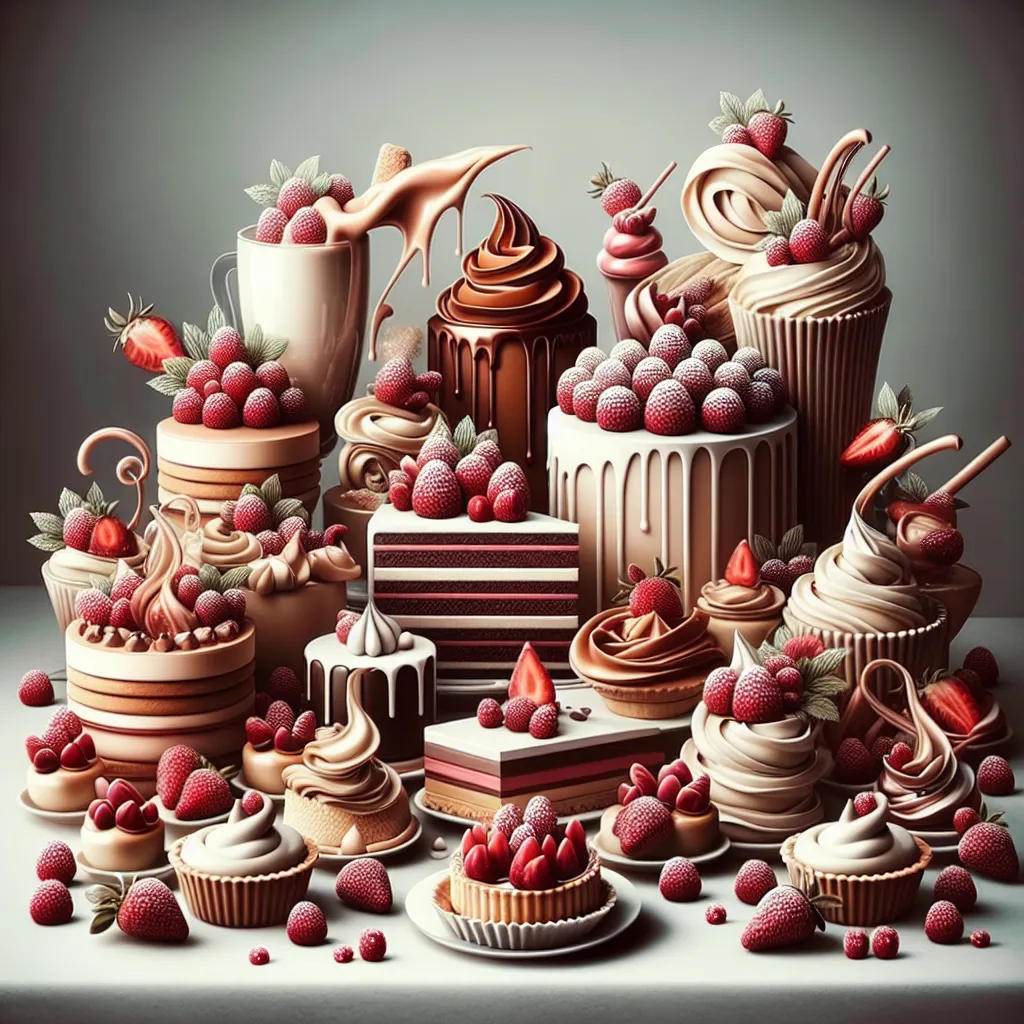Exploring Flavor Combinations: Elevating Your Dessert Game
Exploring flavor combinations is a crucial aspect of mastering the art of dessert. Elevating your dessert game requires a keen understanding of how different flavors complement and enhance each other, creating irresistible treats that leave a lasting impression. When exploring flavor combinations, it’s essential to consider the balance of sweet, tart, and savory elements to create a harmonious taste experience.
One way to elevate your dessert game is by experimenting with unexpected flavor pairings. For example, combining the richness of dark chocolate with the brightness of citrus or the earthiness of matcha with the creaminess of coconut can result in unique and unforgettable desserts. Additionally, incorporating contrasting textures, such as pairing a smooth mousse with a crunchy nut crust, can further enhance the complexity of flavors in your desserts.
Furthermore, drawing inspiration from global cuisines can open up a world of flavor possibilities. Exploring traditional flavor combinations from different cultures, such as the classic combination of cardamom and rose in Middle Eastern desserts or the sweet and salty pairing found in Asian cuisine, can add an exciting twist to your sweet creations.
In conclusion, mastering the art of dessert means delving into the endless possibilities of flavor combinations. By experimenting with unexpected pairings, incorporating contrasting textures, and drawing inspiration from global cuisines, you can elevate your dessert game and create irresistible treats that showcase your creativity and expertise in the world of desserts.
Perfecting Texture: Secrets to Achieving Decadent Desserts
When it comes to mastering the art of dessert, achieving the perfect texture is crucial in creating irresistible treats that leave a lasting impression. Whether you’re whipping up a silky smooth mousse, crafting a flaky pastry, or baking a moist cake, the texture is what elevates a dessert from good to extraordinary.
The secret to achieving decadent desserts lies in precision and attention to detail. One of the key factors in perfecting texture is the careful balance of ingredients. For example, when making a creamy custard, the right ratio of egg yolks to dairy is essential for achieving that luscious, velvety texture. Similarly, in baking, the type and amount of leavening agents can significantly impact the final texture of cookies, cakes, and breads.
Furthermore, mastering the art of dessert requires an understanding of various cooking and baking techniques. From tempering chocolate for glossy ganache to properly folding whipped cream into a delicate soufflé, each method contributes to the overall texture and mouthfeel of the final product.
Last but not least, the element of time should not be underestimated. Allowing a dessert to set, chill, or rest can be the difference between a runny filling and a perfectly set one, or between a crumbly crust and a beautifully crisp one.
In conclusion, paying close attention to the balance of ingredients, mastering various techniques, and understanding the impact of time are the secrets to achieving the perfect texture in decadent desserts. By honing these skills, any aspiring pastry chef or home baker can take their sweet creations to the next level and leave their guests craving more.
Presentation Matters: Enhancing Your Sweet Creations
When it comes to creating irresistible treats, presentation plays a crucial role in enhancing the overall appeal of your sweet creations. Mastering the art of dessert is not only about the taste but also about the visual impact that entices the senses. Whether you’re a professional pastry chef or a passionate home baker, the way you present your desserts can make all the difference.
One important aspect of mastering the art of dessert presentation is to pay attention to the visual details. This includes using attractive serving platters, elegant utensils, and decorative elements such as edible flowers or delicate dustings of cocoa powder. The presentation should reflect the theme or mood of the dessert, whether it’s whimsical and playful or sophisticated and elegant.
Furthermore, mastering the use of color is key to creating an eye-catching dessert presentation. Vibrant, contrasting colors can make a dessert visually striking, while a monochromatic scheme can exude understated elegance. Consider the color wheel when plating your desserts to ensure a visually appealing arrangement.
Texture also plays a significant role in dessert presentation. Incorporating a variety of textures, such as crunchy nuts, smooth sauces, or delicate meringue, can add dimension and interest to the visual appeal of your sweet creations.
Lastly, paying attention to the finer details, such as ensuring clean plate edges and carefully placed garnishes, demonstrates a level of precision and care that elevates the overall presentation of your desserts.
In conclusion, mastering the art of dessert presentation involves a keen eye for visual details, a thoughtful approach to color and texture, and a commitment to precision. By enhancing the visual appeal of your sweet creations, you can elevate the entire dessert experience and leave a lasting impression on your guests or customers.

